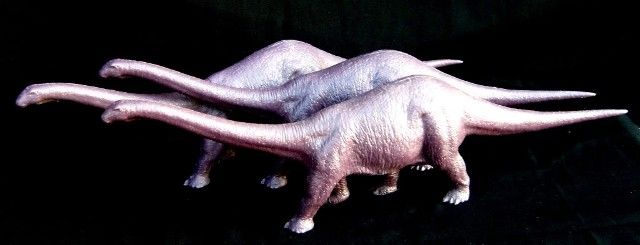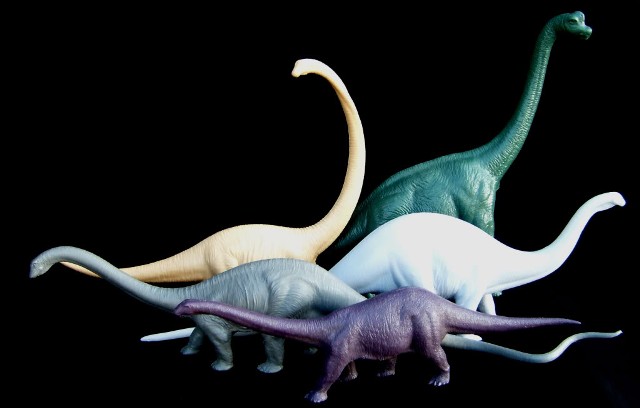Review by Dan, Photos by Boki
Ask someone to name a sauropod, and “Apatosaurus” will often be the first species to come to mind. Consequently, this prototypical animal will often be the answer if you ask “What was the first sauropod ever discovered?” In fact, that title belongs to a relatively obscure creature known as Cetiosaurus. Any fan of Cetacea would do well to guess the relationship between this animal’s name, and the group of massive marine mammals. When Owen first found the fossils of this immense beast in the 1840’s, he did indeed suppose they belonged to an aquatic creature. Surely life this size could not have been supported on land.

Today, we would think little of the great girth of Cetiosaurus. After all, sauropods were the biggest damn things that ever lived, and this little guy was practically a runt compared to the later giants. However, it’s important to remember that Cetiosaurus was only a primitive sauropod; during its lifetime, it probably was one of the biggest damn things around. Both its discoverer and location of discovery can be traced to England, which is almost certainly the reason the British Museum of Natural History line of dinosaurs included this oft-overlooked critter. Comical and stocky-looking, one could think of Cetiosaurus as the Ricky Gervais of sauropods.
It’s the uniqueness of the species that really helps Cetiosaurus shine among his Invicta brethren, but being deep purple and over a foot long certainly helps. His robust physique is practically bulging from every angle, but this is how sauropods very likely appeared in the flesh, with great internal mechanisms for digesting huge quantities of low-nutrient plant material. This low-slung creature is known for having an unusually short tail, a feature which pops quite clearly on this figure. It also keeps this tail well above ground level, something which can’t be said of many other Invicta sauropods.

Despite their relative scarcity, most Invictas fetch only a modest price at auction, and Cetiosaurus falls nicely within that range. For a bit less money, you might be able to swing CollectA’s tiny rendition of this animal, but it is relatively cartoonish and doesn’t help convey the creature’s scale or majesty, something which Invicta does in spades. For those interested, the ventral stamp on this figure lists the production year as 1985, a testament to the tremendous achievements of Invicta that stand tall even to this day.
Support the Dinosaur Toy Blog by making dino-purchases through these links to Ebay and Amazon. Disclaimer: links to Ebay.com and Amazon.com on the The Dinosaur Toy Blog are often affiliate links, when you make purchases through these links we may make a commission

This looked so familiar it was eating a hole in my skull till I get to the end of the article and see 1985 as the production year. I’m certain I had one of these at the ripe old age of 3 or 4 🙂
Since the Mamenchisaurus and Giraffatitan both have elevated tails, the majority of Invicta sauropods are actually NOT tail draggers!
One other thing while I’m being pedantic – there never was a British Museum of Natural History. The Natural History Museum (as it is now known) was formerly under the British Museum banner and officially known as the ‘British Museum (Natural History)’, even though nobody really referred to it that way in common parlance.
Mine’s the anorak.
Estoy de acuerdo de que no es una obra de arte, pero hay que tener en cuenta el momento en que se hizo y que además, en la actualidad no se ha hecho un modelo medianamente decente.